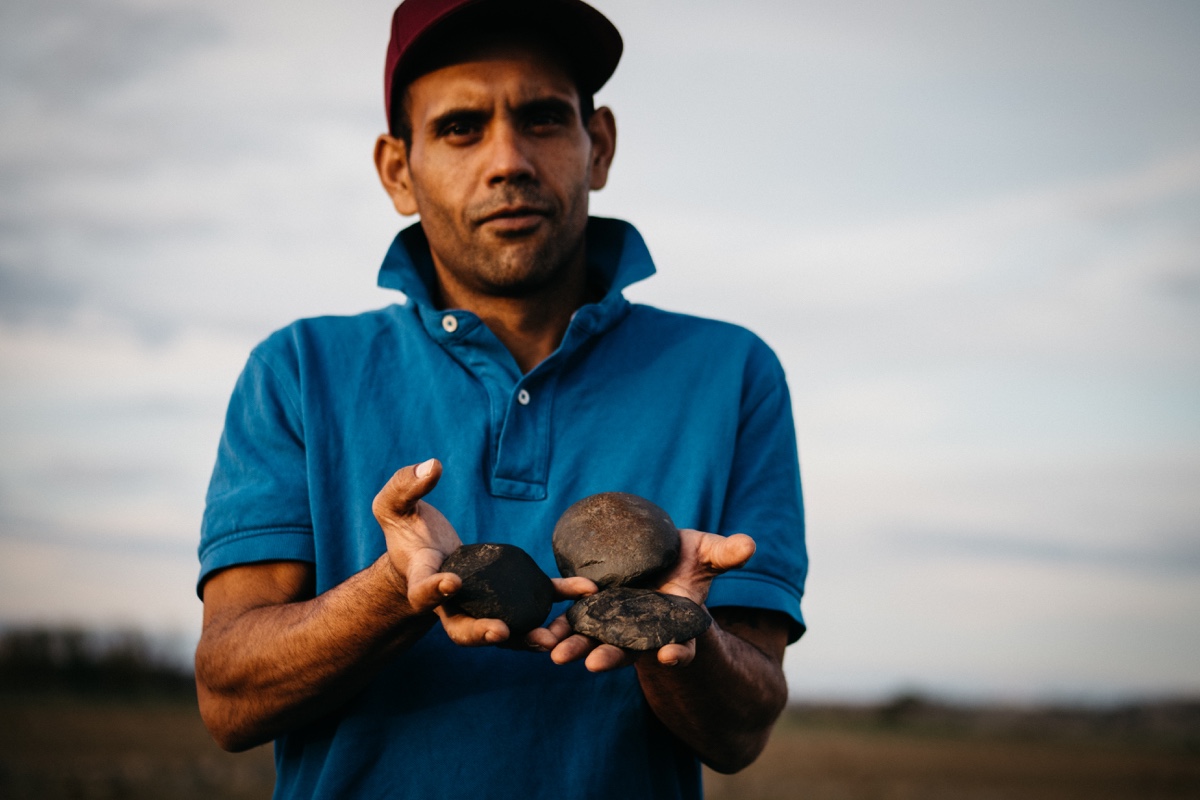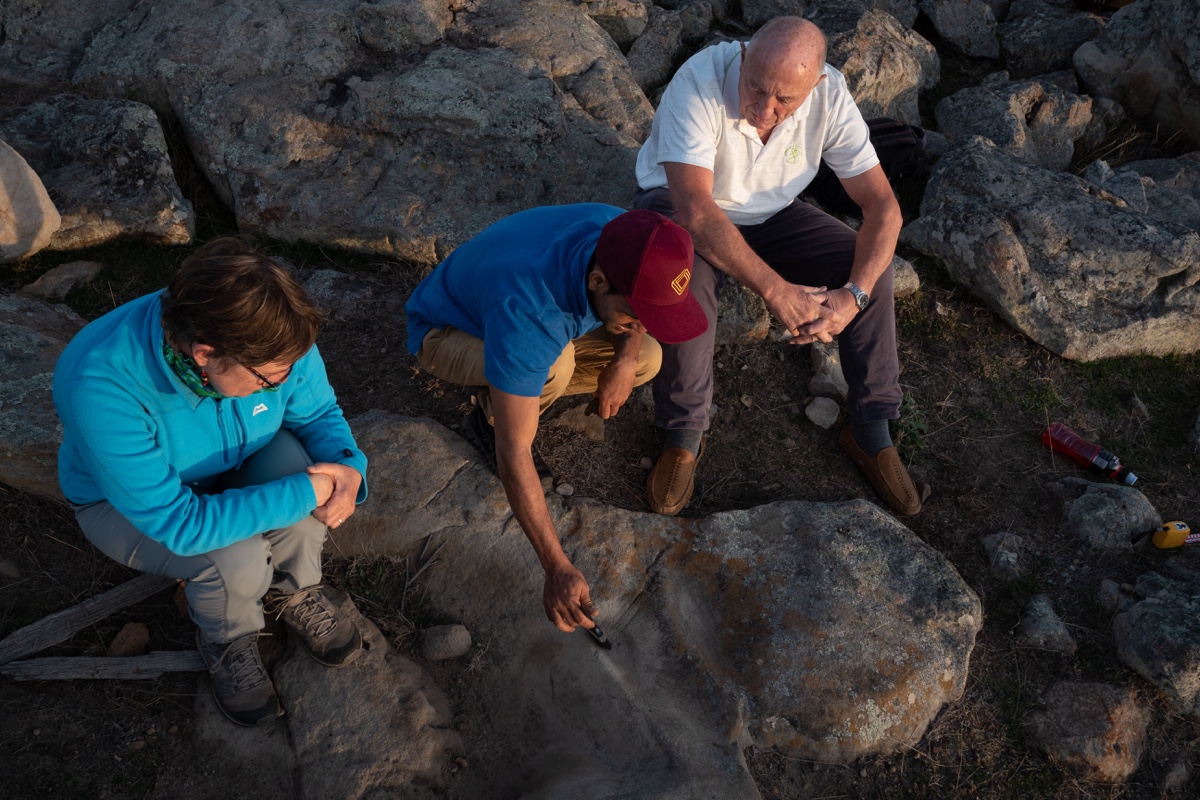A major Aboriginal axe-grinding site, discovered during a heritage survey for a proposed solar farm, will be investigated by University of New England Archaeology staff and students with support from a $50,000 NSW Government grant.
Colin Ahoy Junior and Steve Ahoy, Anaiwan men and cousins, found the historic site while conducting an indigenous heritage survey for a solar farm near Uralla.
Both students at UNE, they enlisted the help of Associate Professor in Archaeology, Wendy Beck, to approach the NSW Environmental Trust for funding to excavate the site.
The $50,000 awarded by the Trust to the Nunnawanna Aboriginal Corporation will enable a small UNE team to minutely examine the debris around the site to establish what artefacts lie there, and what light they can shed on Aboriginal history in the area.
"We're really keen to record what this site can tell us about our people's occupation of this area, and make sure it's properly protected," said Colin Ahoy Jnr.
 "We have the support of the land owner and the developer to protect the site. Now with this funding we can start to investigate what knowledge the site can give us."
"We have the support of the land owner and the developer to protect the site. Now with this funding we can start to investigate what knowledge the site can give us."
Armidale Local Aboriginal Lands Council spokesman Colin Ahoy Senior said it was an important find by Aboriginal men who understood the significance of what they saw.
"Without this understanding this site could have been destroyed. It's valuable evidence of Aboriginal occupation of this area, and we hope that new knowledge comes to light as a result of the research that this grant is supporting."
Axe-grinding grooves have previously been documented across silcrete outcrops in the southern New England, but Dr Beck said the discovery by the Ahoy cousins is by far the most impressive, with dozens of grooves scored in the rock and stone tools found nearby.
The grooves are a physical document of Aboriginal tool-work – the shaping and sharpening of stone axes and spear heads.
Dr Beck said that earlier work by UNE archaeologists suggests it took 80-100 hours of patient grinding to turn a stone blank into a capable edged axe.
Unlike seed-grinding grooves, which tend to be oval and 60 cm x 30 cm in extent, axe-grinding grooves are about 30-40 cm long by about 10 cm wide, and only about 2cm deep.
The visible record of the grooves is exciting to the archaeology team, but most interesting is what might be discovered in the soil downhill from the grooves.
It is thought that the Aboriginal trade in axe material and finished axes only began in the New England area in the past 1000 years, Dr Beck said. Analysis of other axe groove sites dated activity in the sites back to 600 years.
Excavation around the new site may help put new dates on axe-grinding activity, and rock shards will help identify the geographical spread of trade in axe material. Dr Beck is quietly hoping for a charcoal layer that will help accurately date occupation of the site.
"The discovery of such a well-used Aboriginal site, and having the support of landowners to research and protect it, is a gift to archaeologists and the whole community," Dr Beck said.
"Aboriginal people presumably lived in this area for tens of thousands of years, yet we have relatively few remains from which to undersand their pre-European societies."
"This site, and the NSW Environmental Trust funding, means that the descendants of the people who made those grinding grooves can hopefully add more to our understanding of human presence in the New England long before European cultures knew that this continent existed."


